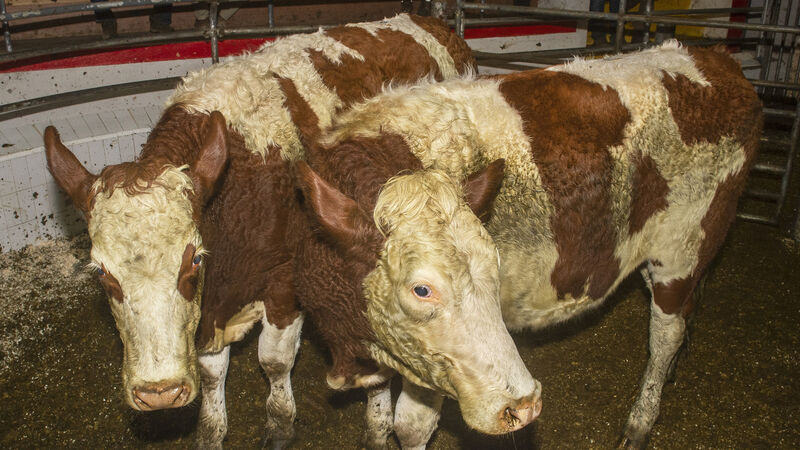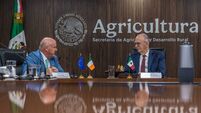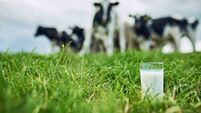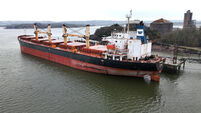Rain will significantly reduce grass utilisation on all land types

Two Simmental cross bullocks born February ’20 average weight 557 kilos sold for €1,140 each at a sale in Macroom Mart. Photo O'Gorman Photography.
The excellent spell of weather over the last number of weeks means that there is still a lot of grass on many farms. Growth is still significant in paddocks recently grazed as temperatures have remained high.
Conditions however are deteriorating with a lot of rain this week. This volume of rain will significantly reduce grass utilisation on all land types. Paddocks will not be grazed out very well as a result and damage should be avoided. We must also appreciate that regardless of weather conditions as we head into November, grass is low in dry matter, low in energy and relatively high in protein. This means that it is of low feed value and this must be taken into account when deciding what animals should remain out to graze it.
Many Suckler farms will still only have some of their animals housed up until now. However, housing is not far away once all of the grass has gone or weather conditions deteriorate further. Management of a suckler herd changes a lot once they are indoors. Most Sucklers seem to calve without assistance when outdoors. Once indoors however with less exercise and a typically lower plain of nutrition, cows are often slower to calve and some will require assistance. I have found this to be the case in the last few weeks as I have housed close up cows for convenience as daylight hours get shorter.
A well-managed dosing protocol must be put in place in suckler herds to optimise herd performance. Make sure that you are using the best product for the target parasites and that you use the correct rate for optimum effect.
From those who did dung sampling as part of the BEEP scheme, it has been reported that many herds are positive for Rumen or Liver fluke or both.
Cows with calves at foot must be fed accordingly. Try to supply sufficient energy for milk production remembering that she is also growing her next calf. If cows are in good condition at housing their diet should aim to maintain that condition up to drying off.
Cows with young calves must supply sufficient milk to grow the calf well while also requiring energy to go back in calf. Silage results should determining if these cows require supplementation or not once housed.
Breeding will start for next Autumn's calf very soon, so insuring cows are in a positive plane of nutrition is important. It is always advisable to have these cows settled indoors in advance of breeding to reduce nutritional stress.
Although most cows are only dry or soon will be it is still a good time to make sure that your handling facilities are ready for the next calving season.
Once all animals are indoors, then there is less space and time to update or install facilities. Most farms now have a purpose-built calving gate that restrains the cow at calving if necessary. These gates are also ideal for getting a calf started suckling safely. Is your calving jack in full working order and are the ropes fit for purpose?
Ensure that your calving camera is working correctly to avoid unnecessary visits to the shed disturbing cows and particularly heifers in the process of calving. Sucklers can get stressed around calving if disturbed as they are not as used to human contact.
Is it possible to clean out and disinfect calving boxes between calving’s? If not, can you explore the option of making this a possibility? Hygiene around calving is so important for calf health.
When cows and calves are housed it is important that the pens are not overcrowded. Most Suckler cows are housed on Slats or Cubicles and with either it is best practice from an animal performance point of view that calves have access to a separate creep area. A calf creep area doesn’t need to be too elaborate but should provide the basics of a warm, dry, clean bed with access to feed and clean water. Ventilation in these areas is also very important. Any draughts can contribute to respiratory issues such as pneumonia. A goo deep bed of straw and no draughts at calf level will reduce issues significantly.










